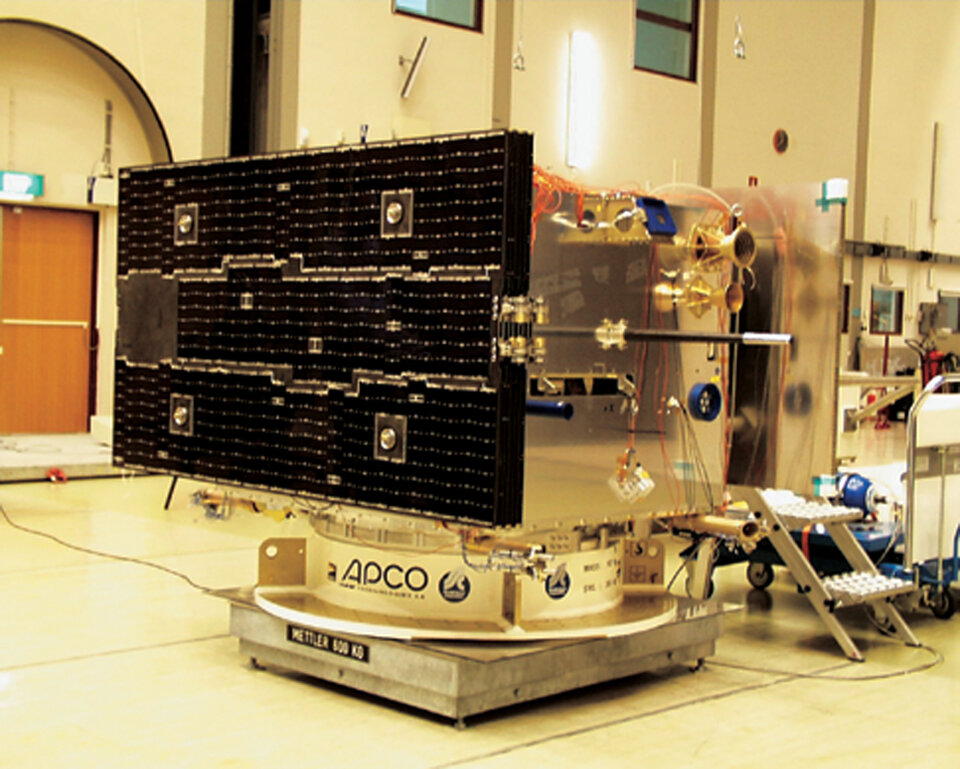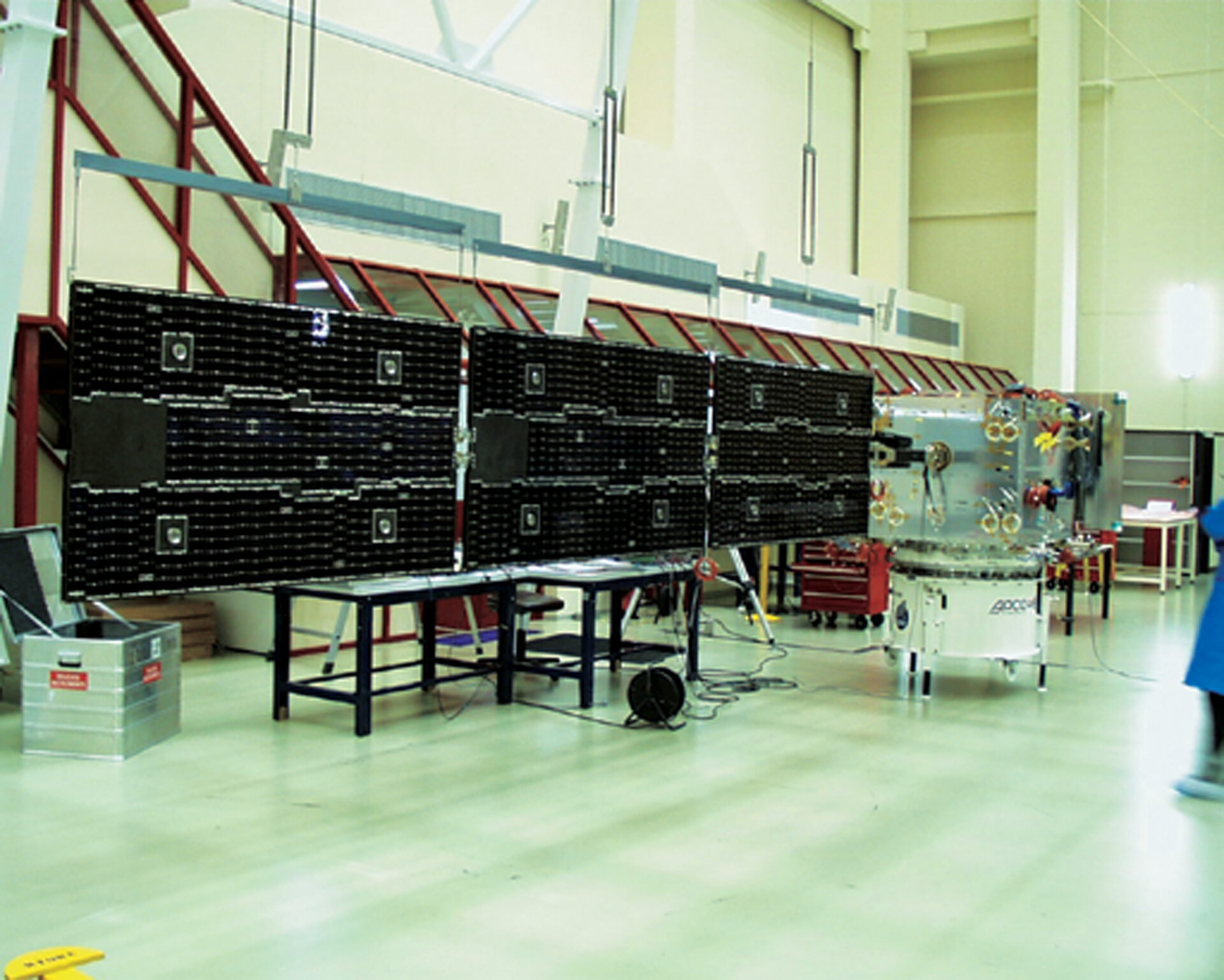Masterpieces of miniaturisation
The SMART-1 spacecraft spans 14 metres with its solar panels extended, but otherwise everything for propulsion, communications, housekeeping and instrumentation fits into a cube just 1 metre across.
Propulsion by an ion engine is not the only innovative technology on SMART-1. Its solar panels use an advanced type of gallium-arsenide solar cells in preference to the traditional silicon cells. And it is testing new communications and navigational techniques.

Out of a total mass at launch of 370 kilograms, the payload available for a dozen technological and scientific investigations is 19 kilograms. Like other components of the spacecraft, the scientific instruments use state-of-the-art concepts and methods of miniaturization to save space and economise on mass. For example the X-ray telescope D-CIXS makes a cube just 15 centimetres wide and weighs less than 5 kilograms.
Building a spacecraft for ESA means fitting together many pieces coming from different countries. Luckily the cross-border teamwork is magnificent. - Peter Rathsman, Swedish Space Corporation, Prime Contractor for SMART-1
| SMART-1 mission overview
|
|
| Purpose | Flight testing electric propulsion and other deep-space technologies, while performing scientific observations of the Moon. |
| Spacecraft | One cubic metre, 370 kilograms. Solar panels span 14 metres when deployed and provide 1.9 kWatts of power. |
| Scientific payload | 19 kilograms |
| Launch | August 2003 from Kourou, French Guiana on a shared Ariane-5 ride to geostationary-transfer orbit (GTO). |
| Orbit | 16-month transfer orbit from GTO to lunar orbit insertion, then polar elliptical operational orbit, ranging from 300 to 10 000 kilometres in altitude above the Moon. |
| Ground stations | ESA network stations around the world, operating 8 hours twice a week. |
| Mission lifetime | 2 – 2.5 years |
| Prime contractor | Swedish Space Corporation, Solna, Sweden |




